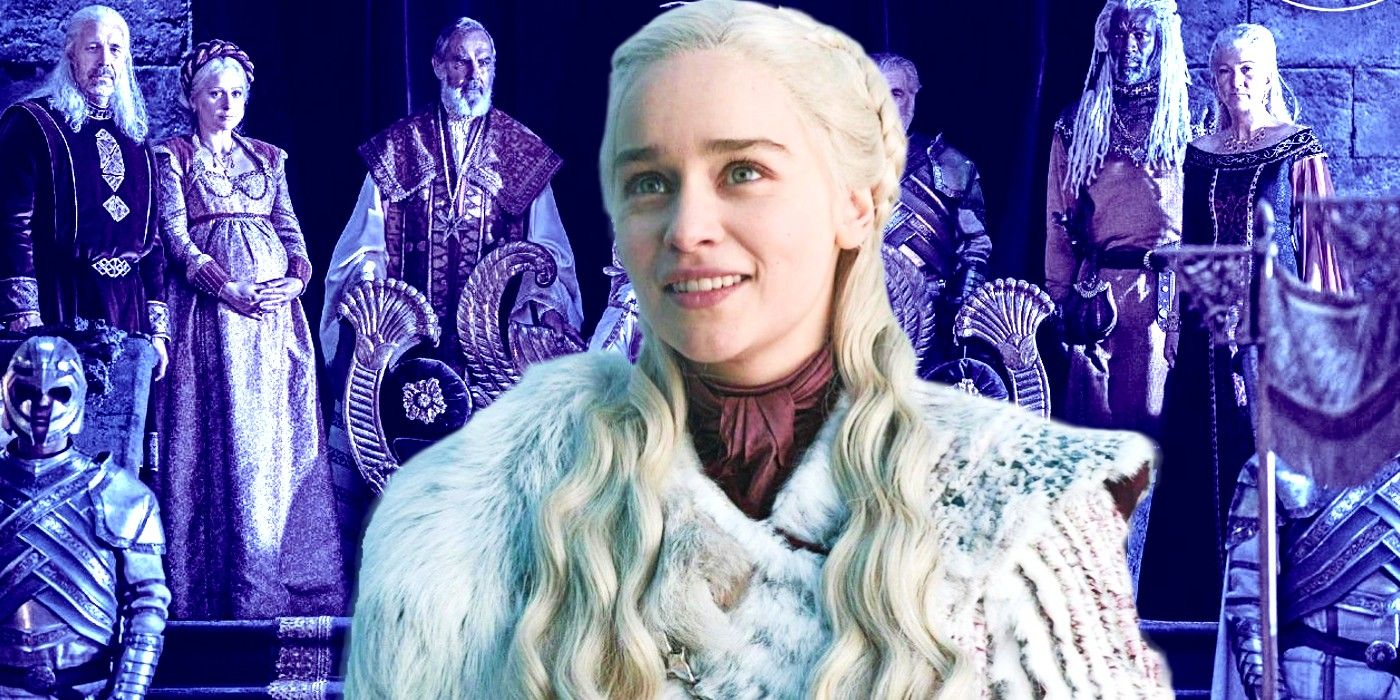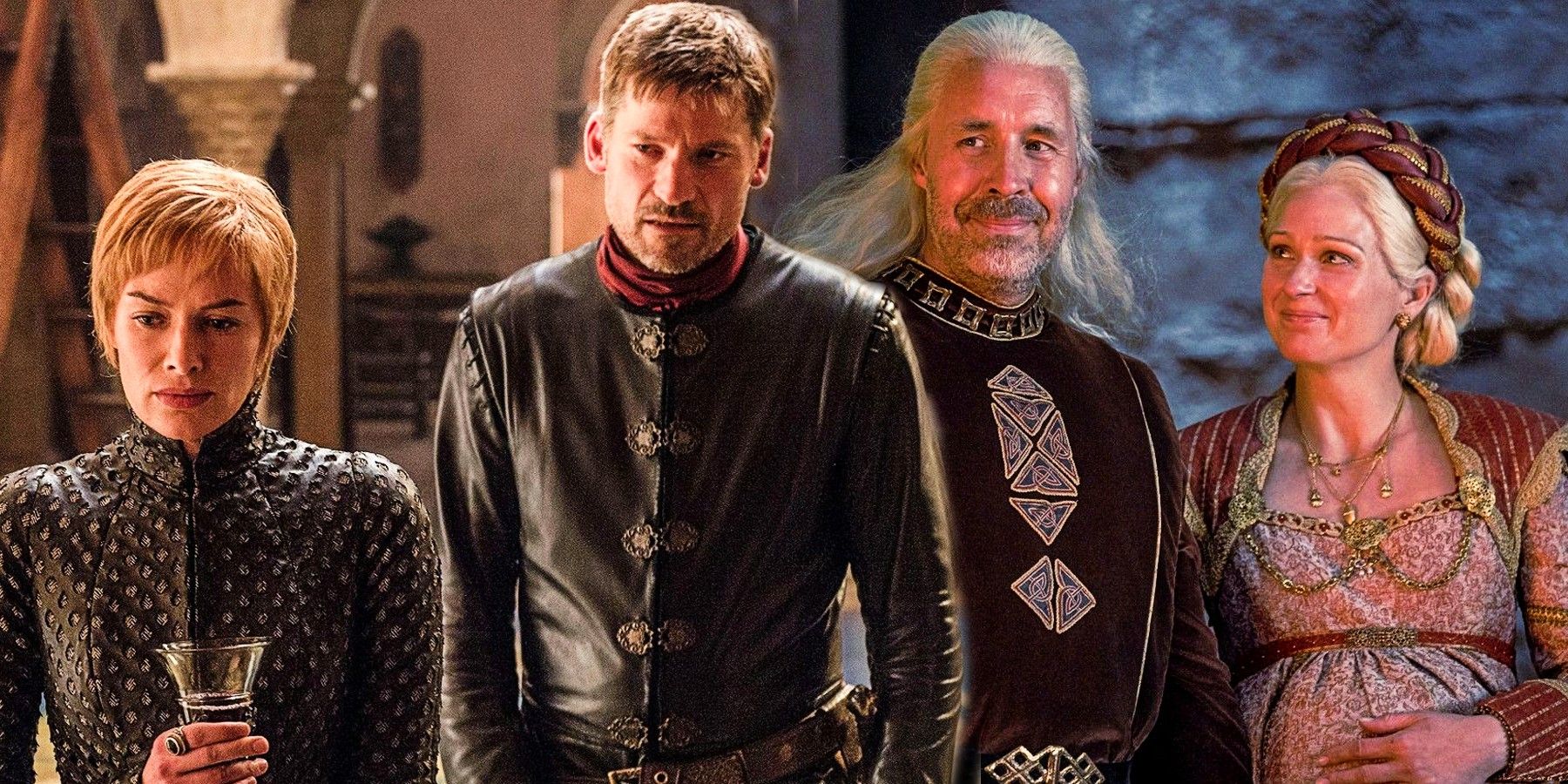Warning: Contains SPOILERS for House of the Dragon and Fire & Blood.The House Targaryen family tree is the center of House of the Dragon, which further displays their tendency to arrange marriages within their own House, and further raises questions as to why the Targaryens all marry each other. Established as a trait of the Targaryens since Game of Thrones, the Targaryens married siblings, cousins, and other relatives together even before their arrival from Old Valyria. The first Targaryen Westerosi king, Aegon the Conquerer, married both of his sisters and fathered a son with each of them. Aegon's son Aenys I brought forth the rest of the Targaryen line.
In House of the Dragon, King Viserys (Paddy Considine) is married to his cousin Aemma Arryn (Sian Brooke). King Jaehaerys I (Michael Carter), the grandfather and predecessor of King Viserys, had a long-lasting and generally successful marriage with his sister, Queen Alysanne. There are notable exceptions, like King Viserys' cousin Rhaenys marrying Lord Corlys (Steve Toussaint) of the House Velaryon who are, at best, distantly related through King Jaehaerys’ mother, Alyssa Velaryon. Another example is the marriage between Queen Aemma's parents, Rodrik Arryn and Daella Targaryen, who carry no blood relation.
Regardless, House Targaryen focuses on marrying within its family house. According to House of the Dragon's source material Fire & Blood - which chronicles the Targaryen dynasty between the rules of Aegon the Conquerer to Aegon III - the Targaryens reportedly married within their house to keep "the blood of the dragon" pure. House Targaryen considers the purity of its lineage to be a mark of superiority over other houses, explaining why the Targaryens all marry each other at many points in the universe's history. This philosophy behind inbreeding was shared amongst the other highborn houses that existed in the Targaryen home continent before the Doom Of Valyria, making House Targaryen no exception in this regard.
Why House Targaryen's Incest Is Allowed But Jaime & Cersei's Isn't
Despite the Targaryens normalizing it within its house, incest still remains to be one of the more uncomfortable practices presented in the world of Westeros. In fact, the practice created a significant rift between the Targaryen dynasty and the Faith of the Seven, causing disorder in the realm. Sparking this rift was the marriage of King Aenys' children, Rhaena and Aegon. To prevent any further tension between the Crown and the Faith and still continue House Targaryen's inbreeding, King Jaehaerys enacted an order known as the "Doctrine of Exceptionalism." The principle behind the doctrine reasoned that the Gods of the Seven did not see Targaryen incest as a sin, for Targaryens were markedly different from the rest of men due to their dragons and Valyrian heritage.
Meanwhile, Game of Thrones' House Lannister is not exempt under the Doctrine of Exceptionalism. As Septon Alfyn in Fire & Blood would proclaim when spreading the doctrine, "One god made us all, Andals, Valyrians and First Men...but he did not make us all alike." Therefore, being descendants of the Andals, the Lannisters' incest is considered sinful by the Faith of the Seven. Any issue that resulted from such incestuous relations would be considered abominations by the gods, which strengthens the motive behind Cersei and Jaime Lannister's concealment of Joffrey Baratheon's real parentage. House of the Dragon will show the continuation of House Targaryen's inbreeding, which will present its own line of consequences as the series progresses. Nonetheless, the Doctrine of Exceptionalism reasons why House Targaryen's inbreeding is permitted in Westeros, and the Lannisters' is not.
House of the Dragon releases new episodes Sundays on HBO and HBO Max.


